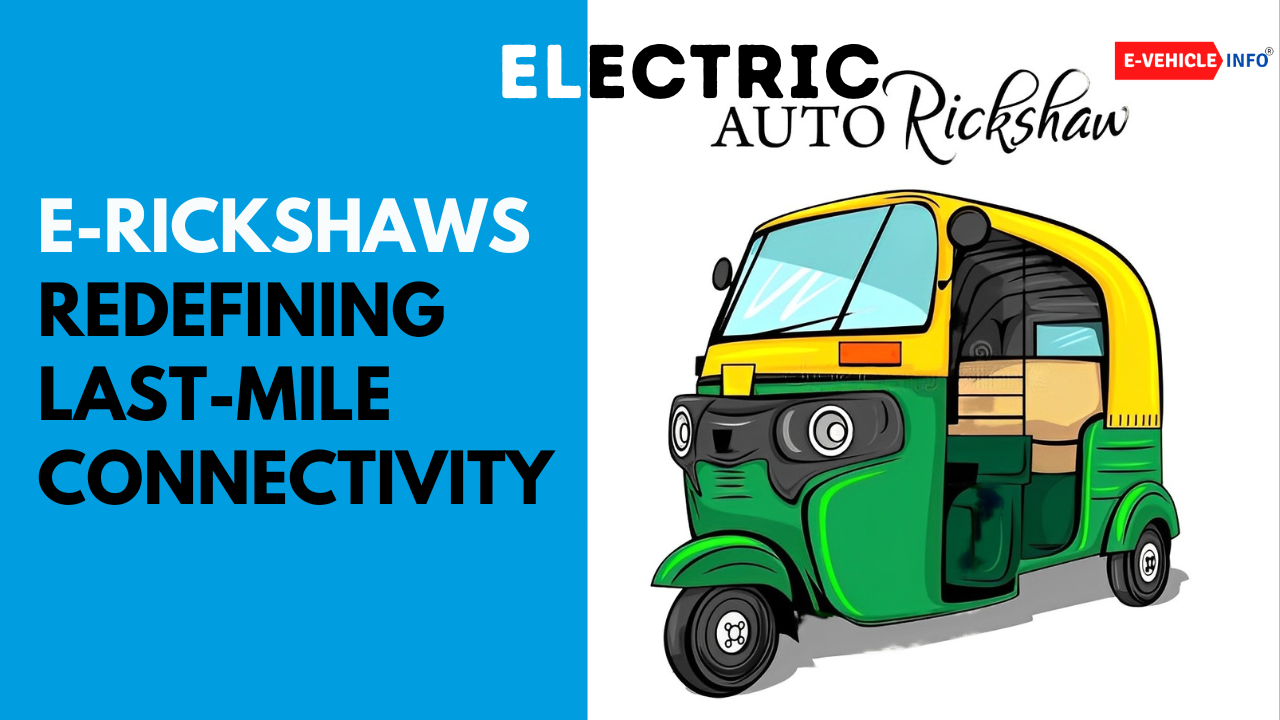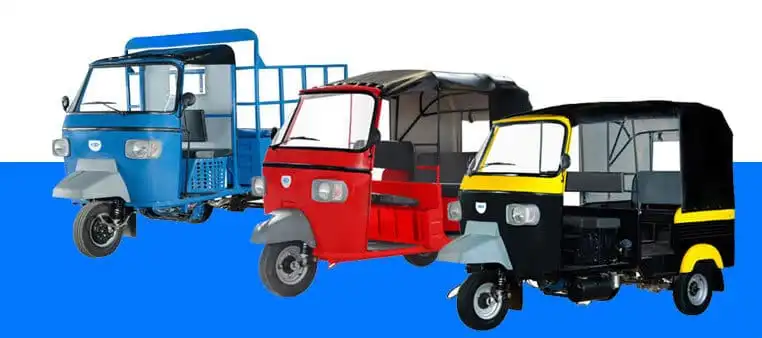
Electric Rickshaws
By offering last-mile connectivity at a pocket-friendly price, Electric rickshaws are redefining the prospects of sustainable mobility for the masses in cities and towns across the country.
Electric rickshaws are emerging as a credible alternative capable of offering a sustainable medium of transportation to the masses in India. Especially, these E-rickshaws are becoming instrumental in meeting the mobility needs of hundreds of thousands of commuters within the city at affordable prices. From zero-tail pipe emissions to offering pocket-friendly commutes, these electric 3-wheelers (E3Ws) come equipped with a host of advantages over conventional petrol, diesel, and CNG-based vehicles. Here’s a complete low down on how E-rickshaws are changing the very face of urban mobility by offering clean, safe, and last-mile connectivity to people in India.
Potential of E3Ws: Numbers Speak

According to the credit rating agency ICRA, E3Ws will account for 14-16% of total 3W sales in the country by FY2025 and the contribution will further rise up to 35-40% by FY2030. Clearly, the favourable economics of operations, policy support, and rapid urbanization are fuelling the growth of electric rickshaws in the country. Experts point out that India’s rapid economic progress which is causing a huge migration of workers is also fuelling the prospects of E-rickshaws in the country. While more people settle down in cities, access to decent living conditions and last-mile connectivity continue to remain one of the major challenges faced by the masses in these urban centres. E-rickshaws are helping ease out the latter challenge of last-mile connectivity and by offering safe mobility to the masses at a pocket-friendly price, these E3Ws are contributing to the economic growth of the country.
Growth Potential: Segments to Watch Out
E-rickshaws are not only revolutionising the passenger segment but also pushing the boundaries in the cargo and commercial space. Compared to the cost economics of petrol and diesel carriers, E-rickshaws can take an almost equal load and offer last-mile connectivity in a more affordable and cost-effective manner. The significant cost savings offered by these rickshaws can be then passed on to consumers, thereby creating a win-win situation for all stakeholders in the business ecosystem. As E-rickshaws also enjoy exemption from registration and road taxes, the savings offered by this mode of transportation are simply phenomenal for fleet owners. No wonder, the report of ICRA states that dealers of E3Ws have registered double-digit growth in sales in the last two years.
Evolving Categories: Passenger and Cargo

According to the Federation of Automobile Dealer Associations (FADA) Report of Retail Sales for May 2023, EVs constitute only 1% of the total vehicles sold in the country. However, with an 83% share in 1% of sales, E3Ws dominate the entire sales of EVs in India. Another important observation is that until recent years, E-rickshaws constituted 90% of total sales of E3Ws although E-autos sales are also catching up with a strong surge coming from both passenger and cargo segments. The push for E-autos is especially fuelled by e-commerce and delivery businesses that find this green mobility alternative very effective in offering last-mile connectivity in a very cost-effective manner.
Adoption Potential: Potential Challenges
While E-rickshaws are well-poised to grow at an exponential pace, the lack of financing, high interest rates, and short-tenure EMIs are challenges that are hampering the growth of the segment in the country. Further, many banks and NBFCs are still not offering the loan facility on E3Ws which is like throwing a spanner in the works. The lack of public charging infrastructure is also weighing in on the growth prospects of E-rickshaws along with impeding the adoption potential of the entire category of EVs in India.
Conclusion
The overall growth prospects of E3Ws including that of E-rickshaws are very encouraging in India. While many factors will help the adoption of E-rickshaws as the mainstay of urban mobility, concerns about climate change, supportive policy framework, and widening acceptance among commuters are likely to lead the expansion of the E3Ws in India in the coming years. Further, the incentives and subsidies under the upcoming FAME 3.0 are also likely to push the adoption of E3Ws going forward. In sum, the time is opportune for E3Ws to spread their wings far and wide and by empowering all stakeholders in the business ecosystem, the domain of E-rickshaws can reach new heights of success and profitability in the country.









